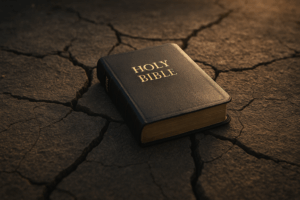⏱️ Estimated Reading Time: 9 min read
[et_pb_section fb_built=”1″ _builder_version=”3.0.47″][et_pb_row _builder_version=”3.0.48″ background_size=”initial” background_position=”top_left” background_repeat=”repeat”][et_pb_column type=”4_4″ _builder_version=”3.0.47″ parallax=”off” parallax_method=”on”][et_pb_text _builder_version=”3.19.3″ background_size=”initial” background_position=”top_left” background_repeat=”repeat”]Every breath is vital to life. Naturally. Likewise, every movement in a sermon is essential. I am confident that you will agree with me that a similitude about life and preaching is appropriate. Preaching is for life. So, whether you are just now answering God’s call to proclaim the unsearchable riches of Christ, or you are celebrating your 50th anniversary of preaching the Word, you and I must continue to grow in this indispensable duty of our vocation.
I was a pastoral intern to Dr. D. James Kennedy when he taught me, “The most difficult sermon I have ever preached is . . . next Sunday’s message.“Dr. D. James Kennedy
Dr. Kennedy’s insight has become a lived-in axiom shaped by hard experience. The truism has the power to awaken me on a Saturday night before I am to preach. This after more than three decades of doing this. I often begin a doctoral-level course on homiletics with Dr. Kennedy’s counsel.
Over the coming year, with the help of others in the D. James Kennedy Institute of Reformed Leadership, I want to offer insights on the respective movements in an expository sermon. Here is a sequence of movements in an expository sermon.
Today, I want to consider the first and the last. No, not the order of Kingdom citizenship, but rather the very first and last sentences in a sermon.
There is a great value to listening to the voices of experienced and well-trained writers and artists, who routinely craft words and compose sentences to express ideas, or to paint literary portraits. I do not mean to say that we should create sermons in the service of art, oratory, or the letters. Indeed, the Apostle Paul warned against such homiletical flourishes as the goal of preaching. Alternatively, the great Missionary Apostle urged us by example to use all (appropriate) means to reach as many as possible. So rather than seeing the sermon in the service of, say, literature, how can we use best practices in writing in the service of the sermon?
With that delimitation, I want to share insights on opening and closing sentences from a writers’ workshop. I believe that there are important lessons for “the preachers’ workshop.” Read carefully. Pause. Breath. What does this say to you about how you begin and end your sermons? Does it matter?
“In music, elements of presence are most frequently found in live performance. Simplicity. Imperfection. Dynamics. The management of silence.
The opening and closing lines of in a lyric section are naturally strong. If you want people to notice an important idea, put it in the lights of the power position, and you will communicate the idea move forcefully”Jenny O’Connell, Artist-in-Residence: Ellis-Beauregard Foundation
Why quote an artist-in-residence? If all truth is God’s truth we can learn from paying attention to the larger landscape.
Jenny O’Connell is a creative non-fiction writer. That is what attracts me to her ideas about writing. Creative non-fiction. Divine, inerrant and infallible “non-fiction” is our bread and butter. And her counsel illustrates a principle that I seek to convey to other preachers. I call that principle: homiletical guideposts.
Guideposts
The management of “the first and last words in preaching” as well as the “management of silence” are homiletical guideposts.
A homiletical guidepost is a strategically placed, carefully crafted, and prayerfully prepared sentence. The sentence is a guidepost in that it is intended to direct the listener to the universal idea drawn from the holy text.
The First and Last Words
The first word you speak in a sermon can be a very powerful introduction to the entire sermon. Or not. There is nothing inherently wrong with ignoring the power of placing a guidepost with your first words. Failing to do so is more of a missed opportunity.
Rather than opening your Bible message with the first sentence of an illustration (that leads to the exegetical and expository statements of a sermon) on John 3:16, place a guidepost. If you leave the guidepost behind and plow into the illustration your first words are part of a “block” or a “movement” that is self-contained. There is nothing about the larger presenting issue you are addressing. Let’s say you read from John 3. You pray. Your first words after your prayer are, “There was once a man who equated prosperity or poverty with God’s love.” Not bad. As a listener, I will follow you. I will think to myself, “The preacher is engaged in telling me a story that will lead to truth. Okay. I buy it. Self: listen up.” But what if your first words were in the form of a homiletical guidepost? What if you identified the “presenting issue” (or fallen condition focus as my friend Bryan Chapell calls this distillation of the dark-side of the text) or the “problem” before launching into the illustration? If you place a guidepost (we will talk about how to place it in a moment) at the entrance gate to your sermon, you will get a different response from me. Let’s use the same text. In fact, you are going to focus on John 3:16. You determine that the presenting issue is, “So many people think they must earn God’s love.” You have your illustration in hand and ready to roll. But you place the guidepost first: “How do we get God to love us?” Okay. Now, I am thinking, “Well, that is a provocative question. I suspect that we just do the best we can.” If I am a believer I might be arrested by that question and think to myself, “You can’t get God to love you. He just loves you. What is he up to?” Good. You have me leaning in. I’m with you. I now have “skin in the game.” I want to get on with this. “Flesh this out for me,” I whisper in my mind. Now. Now, you transition from that guidepost to the opening illustration about the “presenting issue” of the text.
The Sound of Silence
As soon as you read the header you think, “Oh, Simon and Garfunkel.” The jukebox in your mind makes a mechanical noise as it rotates through stored songs. Then, you hear it.
“Managing silence” is really about the power of the “sound of silence.”
I am a musician as well as a minister-educator-gardener. One thing you learn as a performing musician or composer is the power of a musical rest. A rest is not merely a span of silence. This musical device is so much more.
“Silence is something more than a sound vacuum.”Zofia Lissa. “Aesthetic Functions of Silence and Rests in Music.” The Journal of Aesthetics and Art Criticism 22, no. 4 (1964): 443-54.
In fact, a musical rest notation lived-out in creative performance has the emotive potential of preparing the listener to more fully experience the next note (indeed, the rest of the song). Silence is alluring. The musical rest is a compelling experience of the sound of silence. The composer or performer knows this and “manages silence” to deliver the next note with greater power. If there are ten listeners, at that moment, then there are likely ten different thoughts going through their minds. But one thing they have in common: they are now waiting for what comes next.
The homiletical rest is equally powerful. In our example, you can plant the guidepost deeper by managing silence: before and after the guidepost statement. Remember though: the composer uses intervals of musical silence to prepare the experience of the music. The rest, like the guidepost statement, is a doulos, a servant, to the sermon. Literary, musical, or homiletical devices are never to control their master. They are to appear, do their “bit,” and go away. There is both craftsmanship and intuitive impulse at play in the use of silence in sermons. Like any powerful medium, if misused, abused, or let loose, the curated craft can become an anarchist. When the preacher uses any oratorical device for its own sake that thing becomes a Frankenstein’s Monster. Thus, Saint Paul:
1 Corinthians 2:1, “And I, when I came to you, brothers, did not come proclaiming to you the testimony of God with lofty speech or wisdom.”
Let us follow the great Apostle in proclaiming the testimony of God according to the Scriptures, true to the lection before us. I am saying that in doing so we are bound to proclaim it with increasing attention. This same Paul told young Timothy:
1 Timothy 4:14 NASB, “Until I come, give attention to the public reading of Scripture, to exhortation and teaching.”
What we say matters. So, how we say it must also matter.
Guideposts—the first and last words, and the sounds of silence—are the preacher’s tools to say it better. As with any task in our job, any arrow in our arsenal, it is all for naught unless the Spirit of God is in control. You cannot say it right without taking it to the Lord in prayer.
Summary
- The “opening guide sentence” should be the first can you say after the prayer of illumination.
- Say it with care. Consider the cadence. Manage silence.
- Do it all in the service of the Word, the intent of the divine Author, for the glory of God and the exaltation of the Person and work of our Lord and Savior Jesus Christ.




